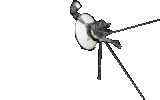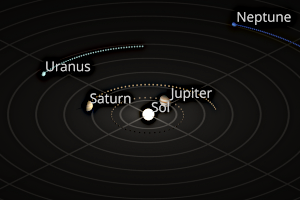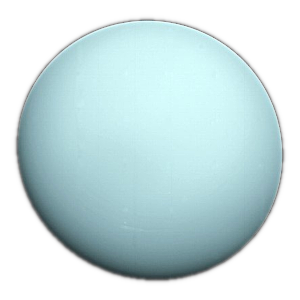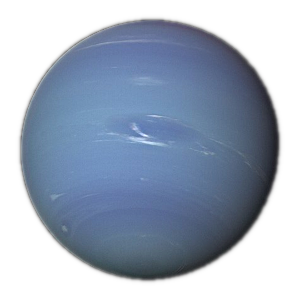
1.
Our Sun2.
Mercury Venus Our Moon Mars3.
Asteroid Belt4.
Jupiter Saturn Uranus Neptune
5.
Pluto6.
Comets
The outer region of the Solar System is home to the giant planets and their large moons. The centaurs and many short-period comets also orbit in this region.
Due to their greater distance from the Sun, the solid objects in the outer Solar System contain a higher proportion of volatiles, such as water, ammonia, and methane than those of the inner Solar System because the lower temperatures allow these compounds to remain solid.
The Outer planets include Jupiter, Saturn, Uranus and Neptune.
These four outer planets, or giant planets (sometimes called Jovian planets), collectively make up 99% of the mass known to orbit the Sun.
Jupiter and Saturn are together more than 400 times the mass of Earth and consist overwhelmingly of hydrogen and helium. Uranus and Neptune are less than 20 Earth masses each and are composed primarily of ices.
All four giant planets have rings, although only Saturn's ring system is easily observed from Earth.
Reference: Wikipedia - Solar System

Jupiter is the fifth planet from the Sun and the largest in the Solar System. It is a gas giant with a mass one-thousandth that of the Sun, but two-and-a-half times that of all the other planets in the Solar System combined.
Jupiter is one of the brightest objects visible to the naked eye in the night sky and is named after the Roman god Jupiter.
Jupiter is primarily composed of hydrogen with a quarter of its mass being helium. It may also have a rocky core of heavier elements but lacks a well-defined solid surface.
Because of its rapid rotation, the planet's shape is that of an oblate spheroid with a slight bulge around the equator. The outer atmosphere is visibly segregated into several bands at different latitudes, resulting in turbulence and storms along their interacting boundaries.
A prominent feature is the Great Red Spot, a giant storm that is known to have existed since at least the 17th century when it was first seen by telescope.
Surrounding Jupiter is a faint planetary ring system and a powerful magnetosphere. Jupiter has 79 known moons. Its largest moon, Ganymede, has a diameter greater than that of the planet Mercury.
Pioneer 10 was the first spacecraft to visit Jupiter, making its closest approach to the planet on in 1973. Pioneer 10 identified plasma in Jupiter's magnetic field and also found that Jupiter's magnetic tail was nearly 800 million kilometers long, covering the entire distance to Saturn.
Jupiter has been explored on a number of occasions by robotic spacecraft with future targets for exploration of its moon Europa.
Reference: Wikipedia - Jupiter

Saturn is the sixth planet from the Sun and the second-largest in the Solar System, after Jupiter. It is a gas giant with an average radius of about nine times that of Earth.
Saturn's interior is most likely composed of a core of iron–nickel and rock surrounded by a deep layer of metallic hydrogen, an intermediate layer of liquid hydrogen and liquid helium, and a gaseous outer layer.
Saturn's planetary magnetic field, which is weaker than the Earth's, has a magnetic moment 580 times that of Earth due to Saturn's larger size.
Wind speeds on Saturn can reach 1,800 km/h, higher than on Jupiter, but not as high as those on Neptune.
A day on the planet Saturn is about 10h 33m.
The planet's most famous feature is its prominent ring system, which is composed mostly of ice particles, with a smaller amount of rocky debris and dust.
At least 82 moons are known to orbit Saturn, of which 53 are officially named; this does not include the hundreds of moonlets in its rings.
Titan is Saturn's largest moon and the second-largest in the Solar System. It is the only moon in the Solar System to have a substantial atmosphere.
Reference: Wikipedia - Saturn

Uranus is the seventh planet from the Sun. It has the third-largest planetary radius and fourth-largest planetary mass in the Solar System.
Uranus is similar in composition to Neptune, and both have compositions which differ from that of Jupiter and Saturn. They are often classified as "ice giants" to distinguish them from the gas giants.
Uranus' atmosphere is primarily composed of hydrogen and helium and contains "ices" such as water, ammonia, and methane, along with traces of other hydrocarbons.
It has the coldest planetary atmosphere in the Solar System, with a minimum temperature of 49 K and has a complex, layered cloud structure with water and methane.
The interior of Uranus is mainly composed of ices and rock.
Like the other giant planets, Uranus has a ring system, a magnetosphere, and numerous moons.
The Uranian system has a unique configuration because its axis of rotation is tilted sideways, nearly into the plane of its solar orbit. Its north and south poles, therefore, lie where most other planets have their equators.
In 1986, images from Voyager 2 showed Uranus as an almost featureless planet in visible light, without the cloud bands or storms associated with the other giant planets. Voyager 2 remains the only spacecraft to visit the planet.
Seasonal change and increased weather activity have been observed as Uranus approached its equinox in 2007. Wind speeds can reach 900 km/h.
Reference: Wikipedia - Uranus

Neptune is the eighth and farthest known planet from the Sun in the Solar System. It is the fourth-largest planet by diameter, the third-most-massive planet, and the densest giant planet.
Neptune is 17 times the mass of Earth, slightly more massive than its near-twin Uranus. It orbits the Sun once every 164.8 years at an average distance of 30.1 AU (4.5 billion km).
Neptune's largest moon, Triton, was discovered shortly after it, though none of the planet's remaining 13 known moons were located until the 20th century.
Voyager 2 flew past Neptune in 1989 and remains the only spacecraft to visit it. The advent of the Hubble Space Telescope and large ground-based telescopes with adaptive optics has recently allowed for additional detailed observations from afar.
Neptune's atmosphere is composed primarily of hydrogen and helium, along with traces of hydrocarbons and possibly nitrogen. Its interior is primarily composed of ices and rock.
Traces of methane in the outermost regions in part account for the planet's blue appearance.
Neptune's atmosphere has active and visible weather patterns. These weather patterns are driven by winds with recorded speeds as high as 2,100 km/h.
Neptune's outer atmosphere is one of the coldest places in the Solar System, with temperatures at its cloud tops approaching −218 °C.
Neptune has a faint and fragmented ring system labelled "arcs".
Reference: Wikipedia - Neptune
A spacecraft mission
to explore our Solar System starts with its launch from earth using a rocket launcher. The spacecraft then uses its own engines to reach its objective and carry out its mission. Some missions have multiple objectives.
The duration of a mission varies, depending on the craft used and purpose of the mission.
The table below is an overview or all the successful spacecraft missions, to date, used to study the outer planets. It only includes spacecraft that left Earth orbit to perform their mission.
Point to ℹ for table information. (Table head remains visible while scrolling)
Select the Spacecraft name or Target for more information.
| Img | Spacecraft | Launcher | Country | Year | Target | Notes | |
| Launch | End | ||||||
| 1 | Pioneer 10 | Atlas SLV-3C Centaur-D Star-37E |
U.S. | 1972 | 2002 | Jupiter | Used on-board instruments to study the asteroid belt, the environment around Jupiter, the solar wind, cosmic rays, and eventually the far reaches of the Solar System and heliosphere. First probe to cross the asteroid belt; first to Jupiter; first human made object on an interstellar trajectory; now in the outer regions of the Solar System but un-contactable. |
| 2 | Pioneer 11 | Atlas SLV-3D Centaur-D1A Star-37E |
U.S. | 1973 | 1995 | Jupiter, Saturn |
To study the asteroid belt, the environment around Jupiter and Saturn, solar wind and cosmic rays. First probe to encounter Saturn and the second to fly through the asteroid belt and by Jupiter.Became the second of five artificial objects to achieve the escape velocity to leave the Solar System. |
| 3 | Voyager 1 | Titan IIIE | U.S. | 1977 | - | Jupiter, Saturn |
Part of the Voyager program to study the outer Solar System. Flybys of Jupiter, Saturn, and Saturn's largest moon, Titan. Studied the weather, magnetic fields, and rings of the two planets. The first probe to provide detailed images of Jupiter's and Saturn's moons. |
| 4 | Voyager 2 | Titan IIIE | U.S. | 1977 | - | Jupiter, Saturn, Uranus, Neptune |
Part of the Voyager program to study the outer Solar System. Studied Jupiter, Saturn, Uranus and Neptune. Only spacecraft to visit Uranus and Neptune. It remains in contact through the NASA Deep Space Network. |
| 5 | Galileo | Space Shuttle STS-34 / IUS | U.S. | 1989 | 2003 | Jupiter | First spacecraft to orbit Jupiter and record its atmospheric composition, ammonia clouds. Also studied Jupiters's moon Io's volcanism and interactions with Jupiter's atmosphere. It launched the first probe into Jupiter, directly measuring its atmosphere. First asteroid flyby, of 951 Gaspra, and discovered the first asteroid moon, Dactyl, around asteroid 243 Ida. Also observed Comet Shoemaker–Levy 9's collision with Jupiter. |
| 6 | Cassini | Titan IV(401)B B-33 | U.S., ESA, ASI. |
1997 | 2017 | Saturn + its moon Titan. |
Cassini–Huygens space-research mission studied Saturn, its rings and natural satellites. Comprised both NASA's Cassini probe and ESA's Huygens lander, which landed on Saturn's largest moon, Titan. Flew by Venus in 1998 and 1999, Earth in 1999, the asteroid 2685 Masursky, and Jupiter in 2000. |
| 7 | Juno | Atlas V 551 (AV-029) |
U.S. | 2011 | - | Jupiter | Orbiter to measure Jupiter's composition, gravity field, magnetic field, and polar magnetosphere. It will also attempt to measure if it has a rocky core, the amount of water present, mass distribution, and its strong winds. |
| 8 | Juice | Ariane 5 ECA+ (VA-260) | ESA | 2023 | 2034 | Jupiter's moons |
Jupiter Icy Moons Explorer (Juice) to orbit and study three icy moons of Jupiter: Ganymede, Callisto, and Europa. They have significant bodies of liquid water beneath their frozen surfaces that may contain extraterrestrial life. |
| 9 | Europa Clipper | Falcon Heavy Block 5 | U.S. | 2024 | 2030 | Jupiter's moon Europa |
To study Europa, a moon of Jupiter. While orbiting Jupiter, Europa Clipper will perform a series of flybys of Europa to study evidence of a subsurface ocean underneath Europa's ice crust. The orbiter will analyze the induced magnetic field around Europa, and attempt to detect plumes of water ejecta from a subsurface ocean as well as various other tests. |
This gallery contains images of spacecraft and their launch vehicles (rockets) used on the above missions.
Thumbnails: Click on a thumbnail image to enlarge it. | Enlarged image: Click on right side of image for next image or on left side for previous image. Click outside image to close.